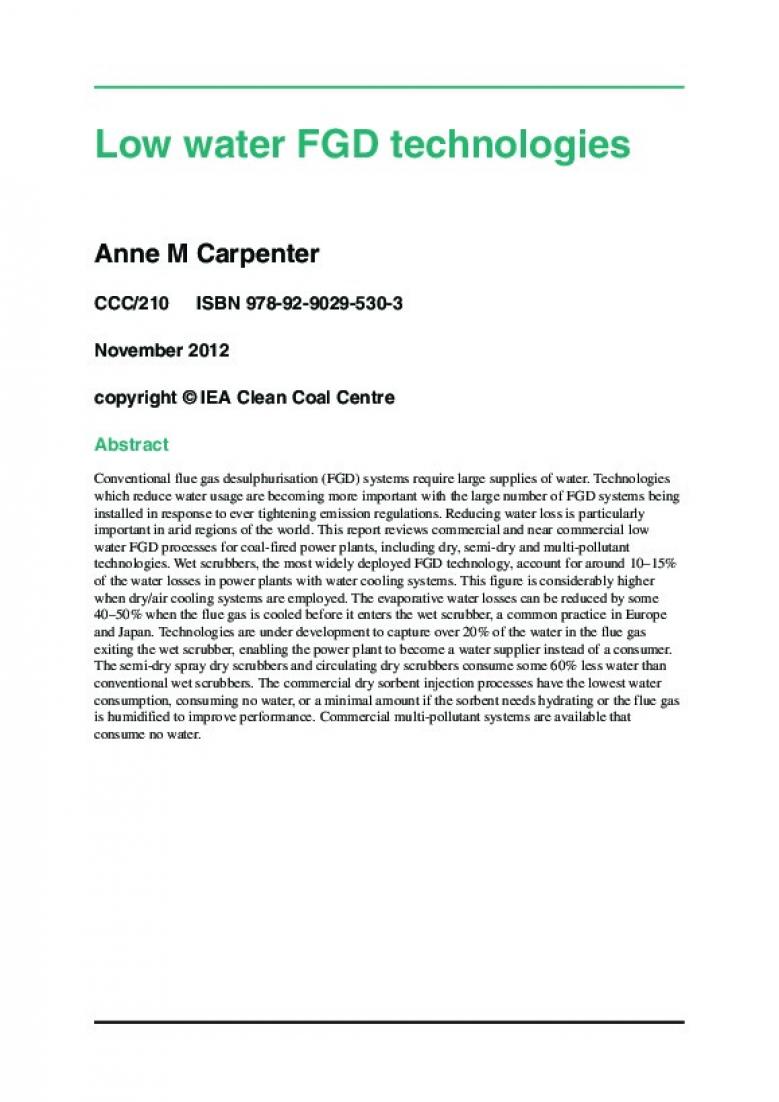CCC/210 ISBN 978-92-9029-530-3
November 2012
copyright © IEA Clean Coal Centre
Abstract
Conventional flue gas desulphurisation (FGD) systems require large supplies of water. Technologies
which reduce water usage are becoming more important with the large number of FGD systems being
installed in response to ever tightening emission regulations. Reducing water loss is particularly
important in arid regions of the world. This report reviews commercial and near commercial low
water FGD processes for coal-fired power plants, including dry, semi-dry and multi-pollutant
technologies. Wet scrubbers, the most widely deployed FGD technology, account for around 10–15%
of the water losses in power plants with water cooling systems. This figure is considerably higher
when dry/air cooling systems are employed. The evaporative water losses can be reduced by some
40–50% when the flue gas is cooled before it enters the wet scrubber, a common practice in Europe
and Japan. Technologies are under development to capture over 20% of the water in the flue gas
exiting the wet scrubber, enabling the power plant to become a water supplier instead of a consumer.
The semi-dry spray dry scrubbers and circulating dry scrubbers consume some 60% less water than
conventional wet scrubbers. The commercial dry sorbent injection processes have the lowest water
consumption, consuming no water, or a minimal amount if the sorbent needs hydrating or the flue gas
is humidified to improve performance. Commercial multi-pollutant systems are available that
consume no water.
| Attachment | Size |
|---|---|
| 898.56 KB |


